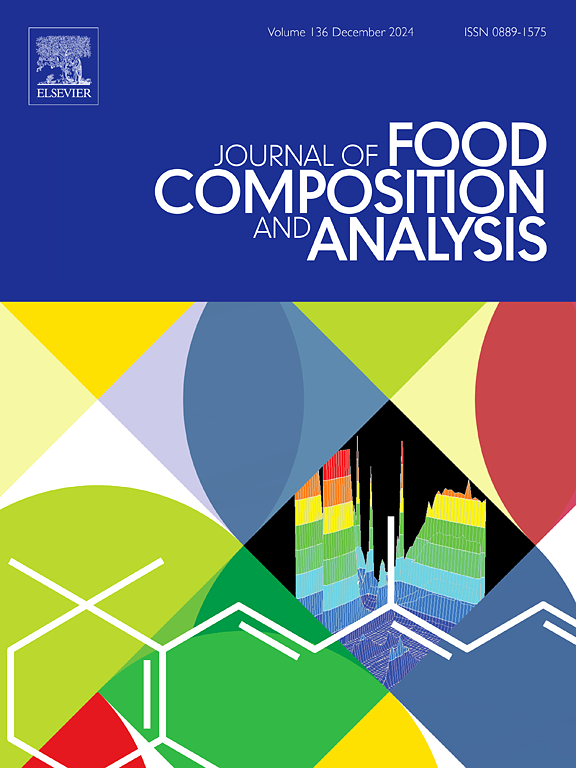Identifying key attributes contributing to resistant starch levels in rice: A comparison of raw and cooked forms
IF 4
2区 农林科学
Q2 CHEMISTRY, APPLIED
引用次数: 0
Abstract
A high level of resistant starch (RS) in the diet helps in controlling excessive blood sugar. RS content varies in raw samples compared to cooked rice. In this study, we investigated the starch properties in four cultivars e.g., ‘Wentangmi’ (WTM), ‘Yixiangyou2115’ (YXY2115), ‘Doongara’ (DGR), and ‘Sanhuangzhan’ (SHZ). Results revealed that apparent amylose remains unchanged in cooked rice. Crude fat contents vary between cooked and raw rice, while protein remains unchanged. The correlation analysis showed GT, consistence viscosity, B1 and B3 chain significantly contributed to RS formation in raw rice, with correlation coefficients (of 0.891, 0.851, 0.998, and 0.952), respectively. In cooked rice, factors contributing to RS formation partly differed from raw rice. Amylose content, GC, GT, hardness, and peak 3 showed a correlation with 0.999, 0.958, 0.968, 0.975, and 0.836 values, respectively. This study helps in investigating correlation indicators and properties along with used in designing breeding approaches to increase RS content in cultivars.
求助全文
约1分钟内获得全文
求助全文
来源期刊

Journal of Food Composition and Analysis
工程技术-食品科技
CiteScore
6.20
自引率
11.60%
发文量
601
审稿时长
53 days
期刊介绍:
The Journal of Food Composition and Analysis publishes manuscripts on scientific aspects of data on the chemical composition of human foods, with particular emphasis on actual data on composition of foods; analytical methods; studies on the manipulation, storage, distribution and use of food composition data; and studies on the statistics, use and distribution of such data and data systems. The Journal''s basis is nutrient composition, with increasing emphasis on bioactive non-nutrient and anti-nutrient components. Papers must provide sufficient description of the food samples, analytical methods, quality control procedures and statistical treatments of the data to permit the end users of the food composition data to evaluate the appropriateness of such data in their projects.
The Journal does not publish papers on: microbiological compounds; sensory quality; aromatics/volatiles in food and wine; essential oils; organoleptic characteristics of food; physical properties; or clinical papers and pharmacology-related papers.
 求助内容:
求助内容: 应助结果提醒方式:
应助结果提醒方式:


